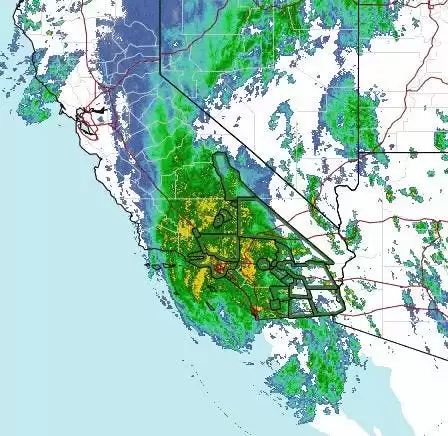Could Heavy Rainfall From A Storm Like Hilary Trigger An Earthquake?
"Did the recent earthquake in southern California have anything to do with the tropical storm? Scientific studies suggest a possible link."
As I sit here writing, the U.S. Geological Survey has just reported a significant earthquake with a magnitude of 5.1, occurring 7 kilometers southeast of Ojai, California. This seismic event coincides with the presence of Tropical Storm Hilary in the region, which is causing intense rainfall. The heavy downpour is expected to persist in southern California and the Southwest until Sunday evening. This situation raises an intriguing question: could the earthquake in southern California be connected to the rainfall from the tropical storm?
Now, let me clarify that I do not possess any concrete evidence to support an affirmative answer to this question. Any assertion in that regard would be purely speculative. However, I believe it is worthwhile to bring your attention to scientific studies that have explored this topic. One such study, published in Geophysical Research Letters in 2006, delved into the "Evidence for rainfall-triggered earthquake activity." The researchers discovered a strong correlation between seismic activity and changes in pore pressure caused by the diffusion of rainwater. Although the underlying physics can be complex, the study discusses the phenomenon of rainwater flowing into open fractures and precipitating into a limited number of these fractures. These processes result in hydraulic changes that could potentially be linked to earthquakes.
The U.S. Geological Survey has also addressed this topic on their website. According to their statement, it is unlikely that seismic hazards are directly influenced by precipitation. This assertion is logical, as rainwater does not easily penetrate several kilometers below the Earth's surface, where most earthquakes originate. However, they acknowledge that periods of heavy rainfall or drought might indirectly impact fault lines that are prone to earthquakes. Such changes in weather patterns could lead to alterations in stress levels on these faults, consequently affecting the rate of seismic activity.
Researchers at Stony Brook University have also contributed to this discussion. The USGS website mentions their work, stating that they employed computer models to demonstrate that variations in stress on California's faults are more significant during years of exceptionally heavy rainfall or drought. While this particular study focused on California, a separate study conducted in China in 2021 also found correlations between rainfall and earthquakes.
It is important to recognize that this line of inquiry is still in the realm of speculation and ongoing research. However, it presents a valuable opportunity for learning and exploration. By examining the potential connections between rainfall and earthquakes, scientists can deepen their understanding of the complex processes that shape our planet. As we continue to unravel the mysteries of nature, we gain insights that can aid in mitigating the risks associated with seismic events.











Comments on Could Heavy Rainfall From A Storm Like Hilary Trigger An Earthquake?